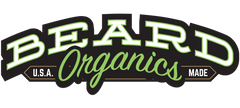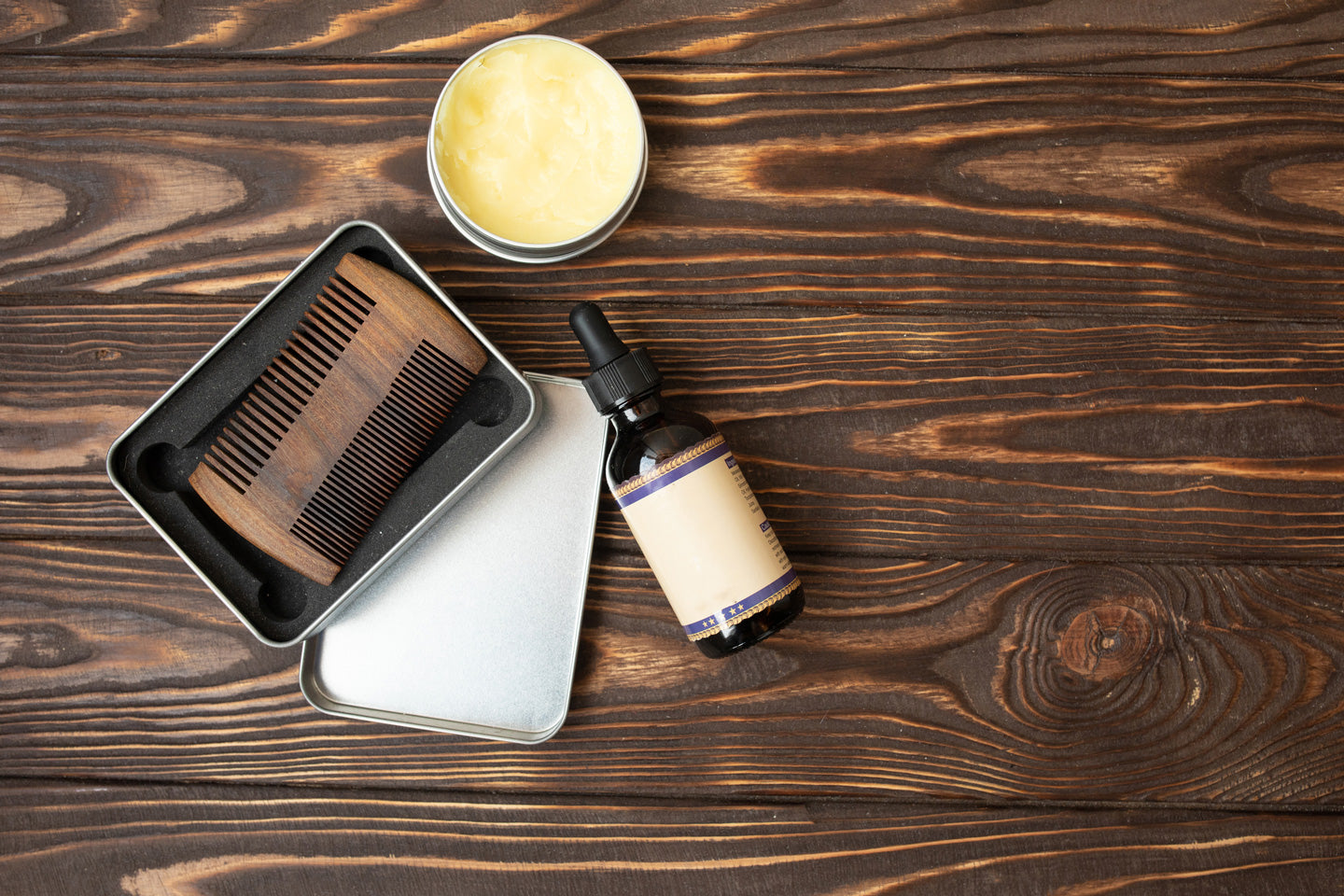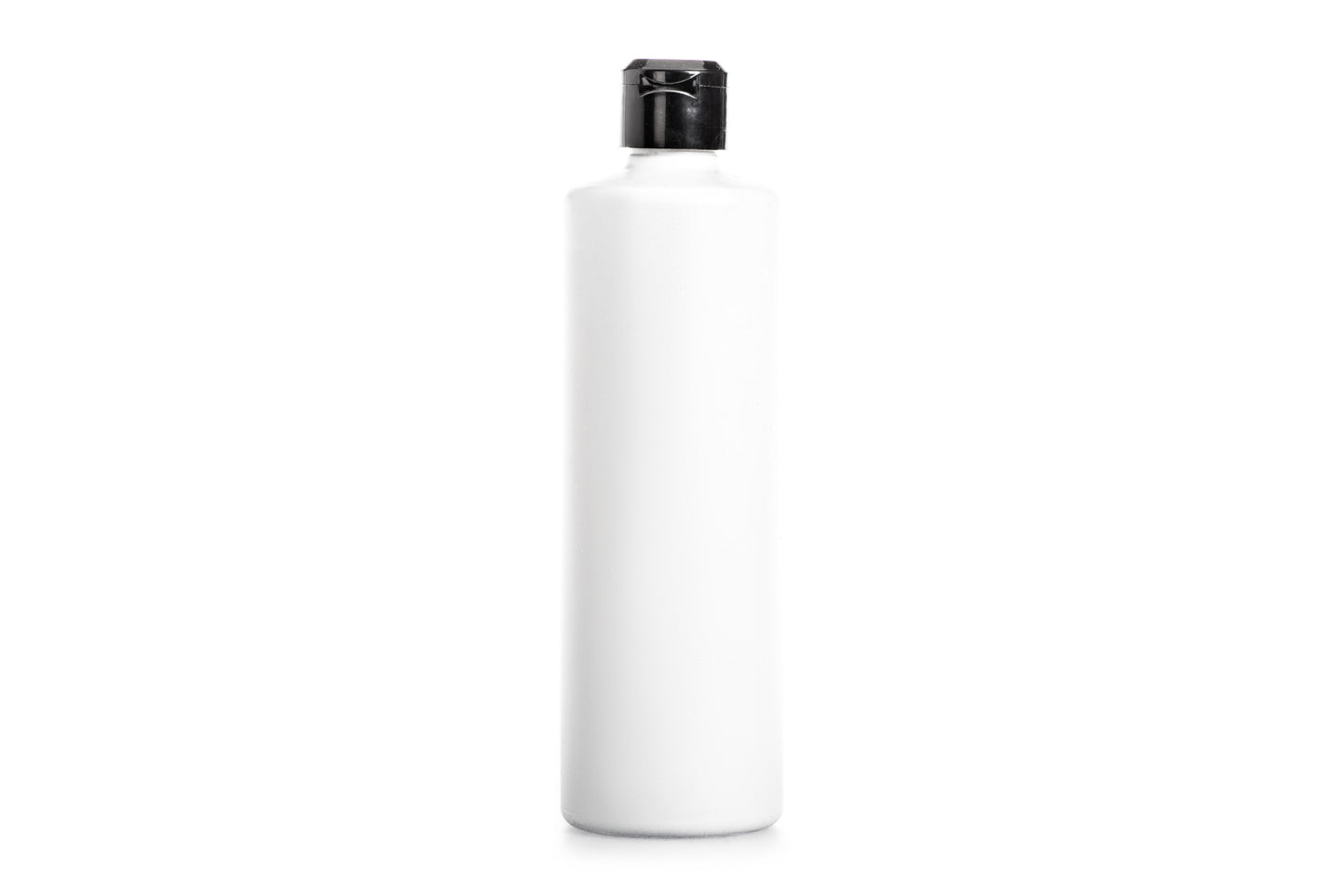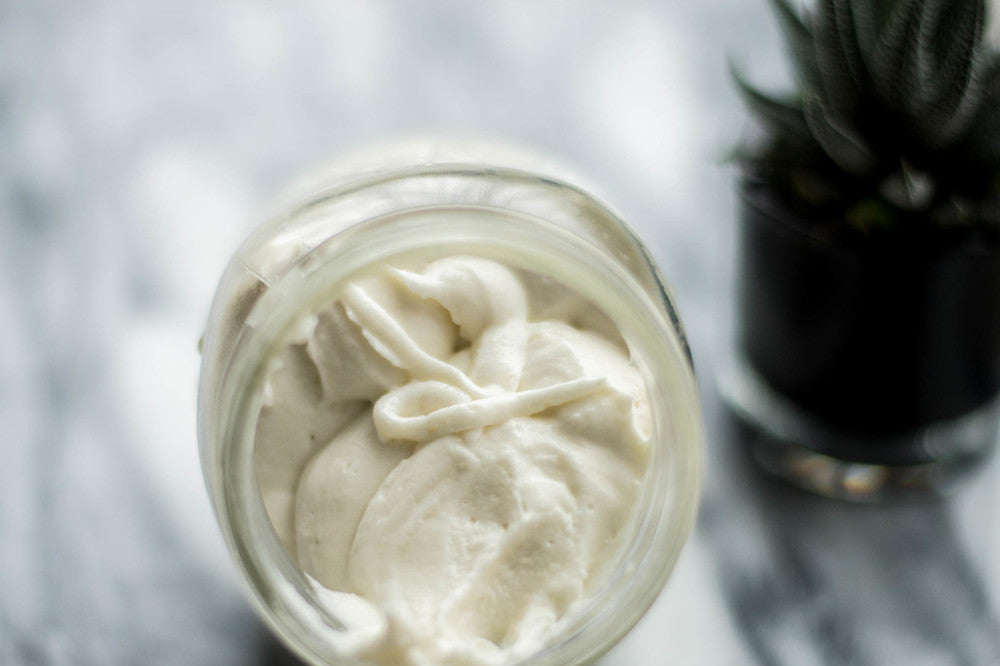The world of beard care grooming products seems to be ever-growing, which leaves many bearded souls wondering what product does what. There's beard balm, beard oil, beard butter, and a plethora of other products, all promising to be the ultimate addition to your beard grooming routine.
The most popular options are probably beard balm and beard oil, but they're far from the same thing. So, what's the difference between beard balm and beard oil?
We're glad you asked.
Beard oil is lightweight and oil-based, making it ideal for moisturization, especially if your beard is short or you're in the process of growing it out. Beard oil will easily penetrate the sensitive skin beneath your beard and adds shine as well.
Beard balm is more like a pomade. It's thick and usually contains beeswax. There are several moisture-providing ingredients, but it can be difficult for them to reach your skin in a product this thick.
However, beard balm does provide lots of control for unruly whiskers and can deep condition the hairs themselves. That makes it ideal for mature beards or for those whose beards have a mind of their own!
But that's just the basics, and the differences between beard oil and beard balm go beyond those generalities. Below we give all the details on beard balm and beard oil, so you can decide which one is best for your daily beard grooming ritual.
Beard Oil
Beard oil is a lightweight, oil-based moisturizer that hydrates the skin beneath your beard. It also helps smooth and soften the hairs, so you end up with a sleek, conditioned look.
On top of providing essential moisture to your skin and beard, beard oil also acts as a natural deodorizer. That's because beard oil is commonly made with a blend of natural, essential oils that come in various scents.
Argan oil, jojoba oil, grapeseed oil, and castor oil are common bases for many beard oils. Almond oil is also another type of carrier oil that is found in beard oil. The scents from oils like that are mild, but many beard oil creators add additional, essential oils to their products for creating a unique scent.
For example, many add pomegranate oil which smells fruity and bright. Others choose to add oils with more invigorating and earthy scents, like eucalyptus. Eucalyptus oil and pomegranate oils have antimicrobial and anti-inflammatory properties that may be especially helpful if you experience acne or irritation.
Of course, highly-scented beard oils aren't for everyone. Some, understandably, prefer their face not to smell like a fruit cocktail or pine-scented candle all day. If that's the case, there are plenty of unscented beard oils available that rely heavily on mild oils like jojoba or argan oil and have next to no scent.
Whatever you do, try to avoid beard oils with synthetic fragrances. Synthetic fragrances usually come from petrochemicals and aren't very good for your skin. They can cause irritation and drying, which leads to beards that are brittle and prone to breakage.
Who Should Use It
Since beard oil arguably does more for the skin beneath your beard than it does for your beard itself, it's ideal for short, trimmed beards or beards in the process of being grown out.
In the early days of growing a beard, it's normal to experience an itchy phase. That's when beard oil is especially helpful. It can moisturize the skin, stop the itch, and soften the stubble.
Beard oil is also ideal if you experience beard dandruff or flakiness. In those cases, a beard oil that contains tea tree oil might be beneficial. It's thought that dandruff is related to a strand of yeast called pityrosporum ovale, and tea tree oil has antifungal properties that can stop the yeast in its tracks.
Beard oil is also ideal for those with extra oily skin. It won't cause breakouts and can even help regulate excess sebum.
How To Use Beard Oil
If you have a short or medium-length beard, you'll want to place a few drops of beard oil into your palms. Rub your hands together to warm the oil, and then work it through your beard. Start at your skin, and then work the oil to the tips.
For longer beards, it's best to use a comb or boar's hair brush after applying the oil. Run the brush or comb through your beard to evenly distribute the product. A boar's hair brush is especially helpful because of its ultra-stiff bristles. The stiff bristles help the oil reach your skin while exfoliating any dead skin cells.
Beard Balm
Beard balm is a thick-textured, leave-in conditioner that provides moisture and shape to beards. It looks and feels waxy, like a pomade which means it takes longer for skin to absorb. Because of its texture, beard balm provides moisture that lasts all day, both to your beard and the skin beneath it.
Beard butter usually contains beeswax, cocoa butter, or shea butter, plus various essential oils. Shea butter, especially, is good for creating a thicker appearance, and it's ideal for those who have thinner beards or patchy areas they want to fill.
Beeswax-based beard balms are ideal for maximizing beard moisture. Beeswax is a natural humectant, which means it attracts water and can help keep your beard hydrated. It also is a natural exfoliant and may help rid the skin beneath your beard of dead cells and flakes.
Cocoa butter also moisturizes skin thanks to a high amount of fatty acids. The fat creates a protective layer between your beard and the outside environment, locking moisture in and keeping everything else out.
The essential oils you might find in beard balm are similar to what you'll find in beard oils. Pomegranate and tea tree oils are common ingredients. Cedarwood, orange, rosemary, and sandalwood oils are popular as well.
Cedarwood and orange oil have antimicrobial properties similar to pomegranate and tea tree oils and may be good for calming irritation and acne-prone skin.
Meanwhile, sandalwood oil helps to nourish skin and hair. It can help with both dandruff and dry ends. And rosemary oil may help with beard growth, allowing you to grow a beard that's healthy and thick.
Again, though, try to avoid beard balms that have synthetic fragrances. The best beard balms use all-natural ingredients to protect the health of your skin and beard.
Who Should Use It
Beard balm is ideal for those with medium or long, mature beards. It's also suitable for those with extra-dry whiskers. In fact, you can use beard balm as an overnight moisturizer.
Beard balm also works well for those with beards that are unruly or hard to style. Because beard balm is a little heavier and more sticky than beard oil, it can tame flyaways and help build the beard shape you want to see.
You can also use beard balm to style mustaches or sideburns. And beard balm is the better choice if you travel often. It won't spill in your suitcase or carry-on bag, and it will keep your beard subtle through long flights.
How To Use Beard Balm
You can use beard balm daily or as a deep conditioning treatment. For either use, it's easiest to apply beard balm when your beard is damp. So, splash some water on it first.
Then, rub a small amount of beard balm in the palms of your hands. A little goes a long way here, so don't overdo it! Warm the balm in your hands by rubbing them together, and then work it through your beard using your fingertips.
If you want to use your beard balm as a deep conditioning mask, you can use a little extra balm and leave it in for about three minutes. Then, rinse it out with warm water.
Can I Use Both Beard Oil And Beard Balm?
If you're having a tough time deciding between beard oil and beard balm, you might ask if you can use both. The answer is yes, you can, but you'll need to be careful not to overdo it. You don't want your beard to look like it's filled with gunky products, after all.
So, if you're going to use both, use a minimal amount of each product. Start with the beard balm and finish with the oil, being sure to comb it through evenly. The results should be a shiny, soft, and healthy beard.
Final Thoughts
The difference between beard balm and beard oil is pretty vast. Beard oil is lightweight and oil-based, ideal for adding shine and moisture, especially for immature beards or stubble.
Meanwhile, beard balm is thick and usually contains beeswax in large amounts. It provides control as well as hydration for longer, more mature beards. It's also ideal for men who travel because it can't spill everywhere!
Luckily, you don't have to decide between beard balm and beard oil unless you want to. Try using these two products together to give your beard shine, moisture, and control.





